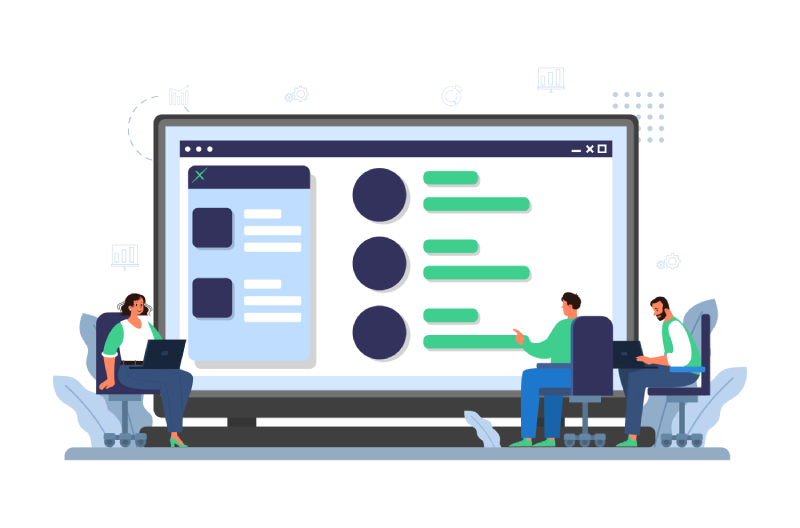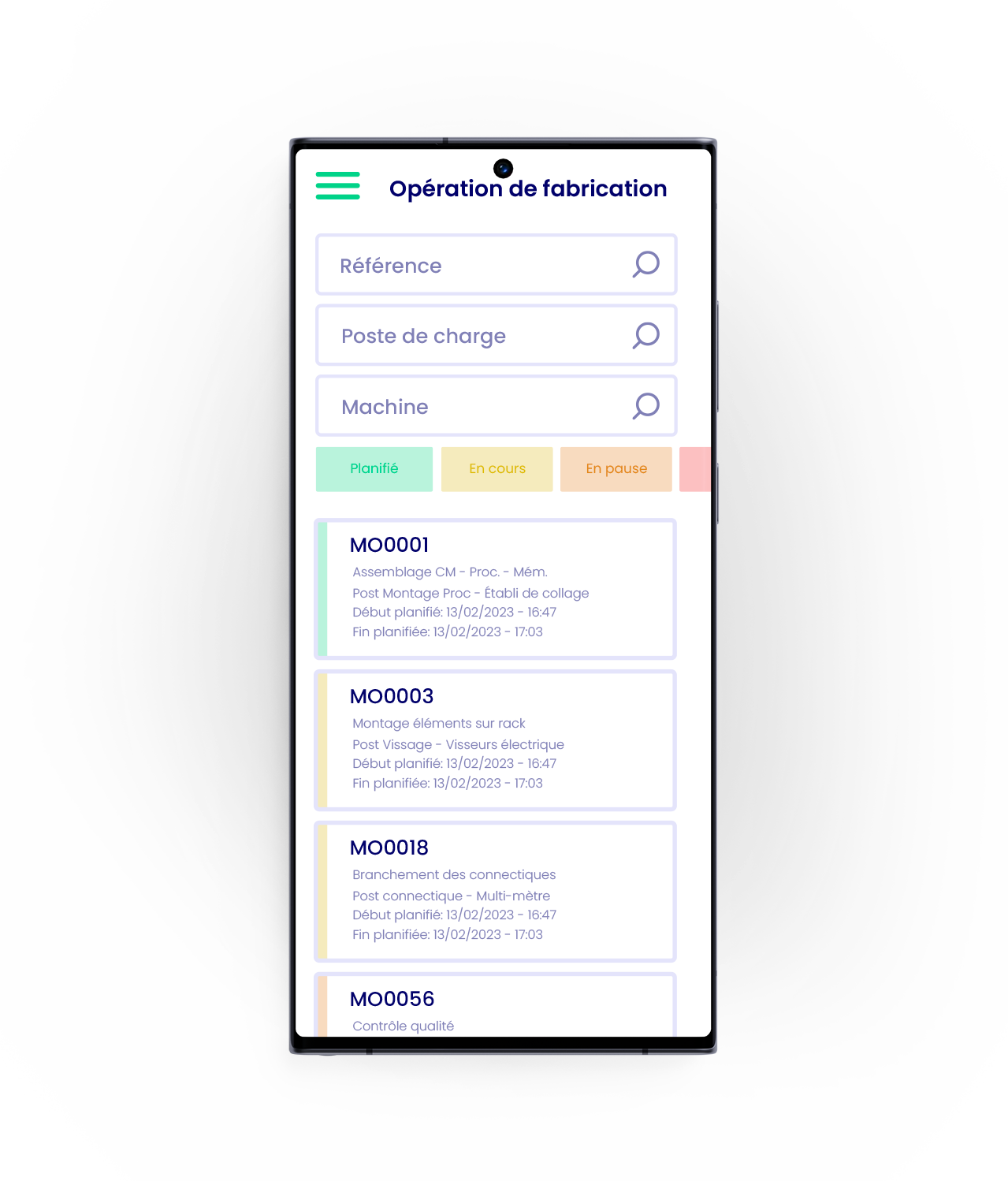Update
AOS- Changes from v6.0 to v7.0

1. General
- Trade name management: in addition to multi-company management, it is now possible to manage several trade names/brands which can buy and sell products, have dedicated stock locations, and their own sales documents.
- Product management by company: different management principles and product characteristics for different companies.
- Adding sms messages.
- Customer/supplier language taken into account when displaying product name and description on orders and invoices.
- Addition of a generic connector for FTP document transfer.
- New connectors: Docusign, Teklynx (Codesoft and Sentinel), Zebra barcode scanner, Gmail, Office 365, Mindee, etc.
- Data Capture module: :
→ Data-capture is a new module from Axelor that makes it easy to interface with OCR software (such as Rossum or Mindee), enabling dematerialized documents to be read. For the moment, Data-capture only manages invoices, and will be extended to other objects in future versions.

2. Accounting / Invoicing
- Discount management.
- Payment due dates: set up a payment due date table for customer/supplier invoices and accounting entries.
- Payment session management: mass customer or supplier due date payment campaigns via a selection screen for documents due or nearing their due date.
- Automated bank reconciliation: addition of customizable reconciliation rules.
- Adding functionality to manage multiple invoicing deadlines.
- Cheque remittance management.
- Annual accounting closing: a wizard has been set up to guide users through accounting closing operations. A step-by-step progress monitoring system has been defined, with links to all the processes to be carried out at each stage.
- Cut-off – deferred revenue/Accruals: the deferred income/accruals cut-off function automatically distributes income and expenses over their respective useful lives, using reversal entries. Cut-off dates are entered on invoices and accounting entries. Thanks to this cut-off function, it is easy to book deferred income and expenses with their reversals via the same channel.
- Modification of VAT number management for companies.
- Fixed assets: mass validation of fixed assets and improved fixed asset splitting.
- Accounting entries: :
→ Automatic filling of voucher date with accounting document date.
→ New “simulated” status added to accounting entry lines.
→ Added new values for functional origin – Sale, Purchase, Payment, Cut off and Fixed asset.
→ Added consistency checks. - Cost accounting: :
→ Management of active/inactive status to enable an accounting manager to deactivate an existing account/analytical journal/analytical account.
→ Adding management of analytical accounts by company.
→ Analytical journal: addition of a code for the analytical journal and a unique constraint on the code and company.
→ Possibility of managing up to 10 groupings per analytical axis. - Accounting year: new temporary closure status.
- Adding the ability to automatically block customers in arrears.
- File of Accounting Entries import and export optimized.
- Updated the declaration of trade in goods to reflect changes in legislation.
- Added the ability to create accounting report templates.
- Improved management of VAT regimes.
- Lettering management optimized to reconcile/unconcile previously filtered entry lines using various parameters to be entered.

3. Bank payments
- Bank statements: Entry lines based on statement rules and bank statement requests can be generated automatically.
- Bank statement line: ODS and xlsx export added.
- Bill of exchange management.
4. Budget / Treasury
- Improvements to the budget management module.
- Weekly and bimonthly periodicity added for forecast generation.


5. CRM
Enhancement of the CRM module:
- New CRM application to follow developments in the web application and based on the new mobile application standard (React Native).
- Improved tracking of lead, contact, and customer activity.
- Process simplification: a lead must be converted into a prospect to attach an opportunity.
- Enhanced Office 365 and Google Workspace connectors.
- Opportunity/lead statuses are now customizable by users.
- Scoring of opportunities, leads, and prospects.

6. Sales / Purchases
- Complementary products: Added the ability to define complementary products to be added to sales when selecting a product.
- Scale management: it is now possible to create scales for order lines. Scales allow you to define an order or order line field according to classification and result rules (using groovy functions).
- Rates:
→ Added option to make rates non-negotiable, which avoids price modification at quotation line level.
→ Added the possibility of exceeding certain discount levels if authorized. - Management of supplier deposits.
- Added the ability to define the triggering of free shipping if a certain order amount is exceeded, on both the sales and purchasing sides.
- Purchase order: reports generated from a purchase order now display specific notes based on the tax equivalents of the purchase lines.
- Margin calculation with cost price or sales price at 0:
→ A new configuration in the sales application makes it possible to calculate a margin even if the cost or sales price is 0.

7. Stocks / Supply Chain
- Delegation between customers: new functionality for indicating delegation between customers in terms of ordering, delivery, and invoicing.
- Barcode management for tracking numbers.
- Improvements to requirements calculation.
- Addition of a batch to recalculate all quantities and average cost method history on stock location lines.
- Automatic stock reservation of components for production orders.
- Stock movements:
→ Adding the possibility of blocking invoice generation from a stock movement.
→ Adding a validation step for invoicing delivery notes and new invoicing statuses for the delivery note line: “delayed for invoicing” and “validated for invoicing”.

8. Manufacturing
- Sales and operations planning (S&OP) and master production plan (MPP) functionalities.
- Merge production orders.
- Multi-level planning of production orders.
- Work centers groups added, enabling you to group together several work centers.
- Adding the ability to generate all sub-production orders directly from a sales order.
- Enhanced MRP (Materials Requirement Plan) to anticipate production requirements.

9. Maintenance
- New maintenance management module for production machines, integrating the AOS standard.
- This module enables you to manage and track the preventive and corrective maintenance of machines and equipment used in production.

10. Configurator
Enhanced sales and manufacturing configurators:
- Support for Studio fields.
- The configurator can now fill lists on generated products or order lines.
- N to N fields can now be filled from a configurator.
- Access to parent sales order.
- Takes into account products consumed during production phases.
- Production workshops taken into account.
- Enhancements to various configurator functions.

11. Project
The project module has been modified to provide greater flexibility in the configuration of projects and tasks. It is now possible to customize a project’s characteristics and those of its tasks to display only what is essential.

12. Studio / BPM
New integrated BPM module for managing business processes using the BPMN 2.0 standard.
It adds functionality for creating, deploying, executing, modifying, and monitoring the entire business process, in No-code and Low-code
- New Studio user interface with real view of existing forms and new component layout.
- Creation of a new mapper for creating scripts in no-code.
- New mapper for creating no-code queries.
- Adding a new selection constructor.
- API connector: The “API connector” allows you to call the REST API dynamically from the studio and BPM.
- Export and import the API connector with the app loader.
- Studio and BPM functionality enhancements.

13. Mobile application
New mobile application for CRM, stock, and manufacturing modules.